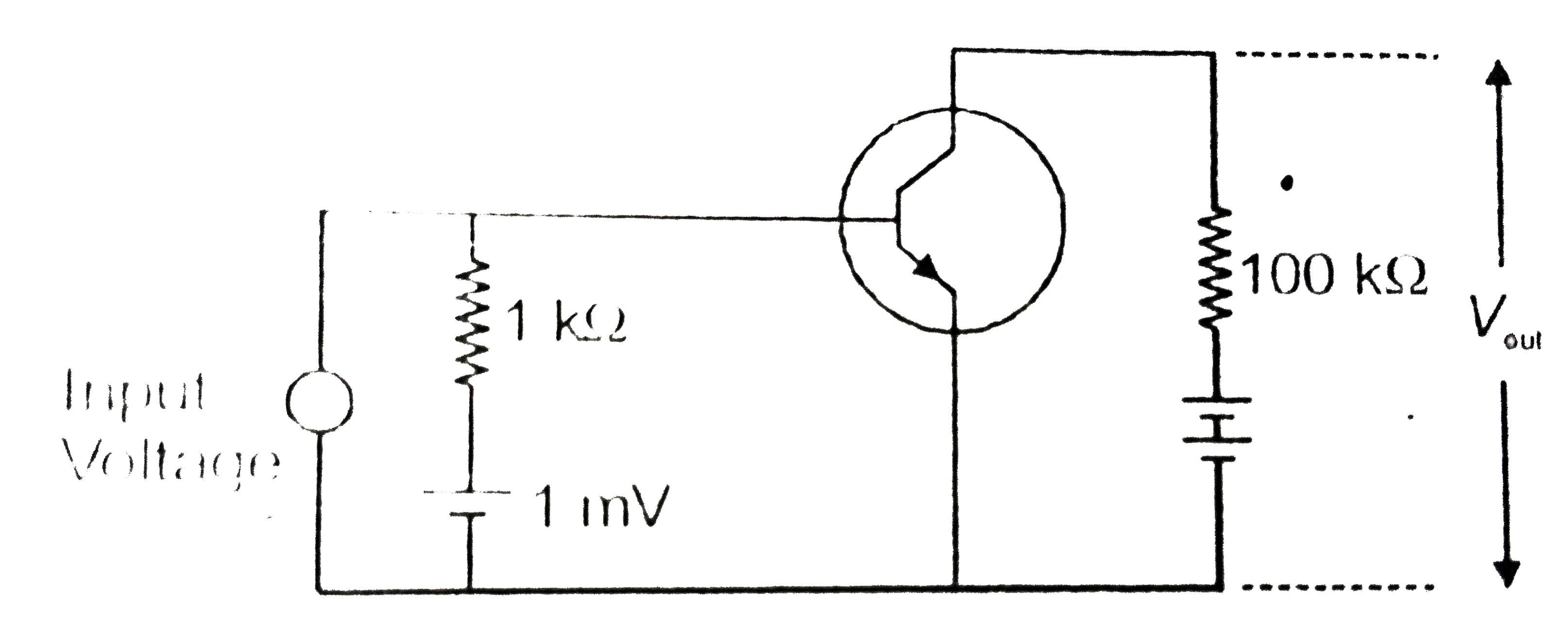In the following common emitter configuration an npn transistor with current gain β=100 is used. The output voltage of the amplifier will be

10 mV
0.1 V
1.0 V
10 V
The correct Answer is:C
V0Vin=βRiRin⇒V0=βRiRin×Vin=100×10kΩ1kΩ×1mV=1V
Topper's Solved these Questions
- SEMICONDUCTORSBOOK - ALLENCHAPTER - SEMICONDUCTORSEXERCISE - Part-3(Exercise-3)
27 Videos
- SEMICONDUCTORSBOOK - ALLENCHAPTER - SEMICONDUCTORSEXERCISE - Part-3(Exercise-4)
51 Videos
- SEMICONDUCTORSBOOK - ALLENCHAPTER - SEMICONDUCTORSEXERCISE - Part-3(Exercise-1)
84 Videos
- PHYSICAL WORLD, UNITS AND DIMENSIONS & ERRORS IN MEASUREMENT BOOK - ALLENCHAPTER - PHYSICAL WORLD, UNITS AND DIMENSIONS & ERRORS IN MEASUREMENT EXERCISE - EXERCISE-IV
8 Videos
- WAVES AND OSCILLATIONSBOOK - ALLENCHAPTER - WAVES AND OSCILLATIONSEXERCISE - Part-1(Exercise-05)[B]
42 Videos
Similar Questions
In the following common emitter configuration an NPN transistor with current gain β=100 is used. The output voltage of the amlifier will be

View SolutionIn the following common emitter configuration an NPN transistor with current gain β=100 is used. The output voltage of the amlifier will be

View SolutionIn the following common emitter configuration an n-p-n transistor with current gain β=100 is used. What is the output voltage of the amplifier ?

View SolutionIn the given figure, a transistor is connected in common emitter configuration . If VBE=1V and current gain β=100, then the voltage across collector- emitter terminals VCE is
[VBE-voltage across base-emitter junction ]

View SolutionIn a common emitter amplifier circuit using an n-p-n transistor, the phase difference between the input and the output voltages will be:-
View SolutionIf α and β current gains in common-base and common-emitter configuration of a transistor, then β is equal to
View SolutionA transistor is connected in common emitter configuration as shown in the figure.If VBE=1V and current gain β = 100,then the voltage across collector emitter terminals VCE is

View SolutionAn NPN transistor is used in common emitter configuration as an amplifier with 1kΩ load resistance. Signal voltage of 10 mV is applied a across the base-emitter. This produces a 3 mA change in the collector current and 15μA change in the base currect of the amplifier. The input resistance and voltage gain are :
View SolutionIn a common emitter transistor amplifier, the output resistance is 500KΩ and the current gain β=49. If the power gain of the amplifier is 5×106, the input resistance is
View SolutionConsider an n−p−n transistor amplifer in common-emitter configuration. The current gain of the transistor is 100. If the collector current changes by 1mA, what will be the change in emitter current?
View Solution
